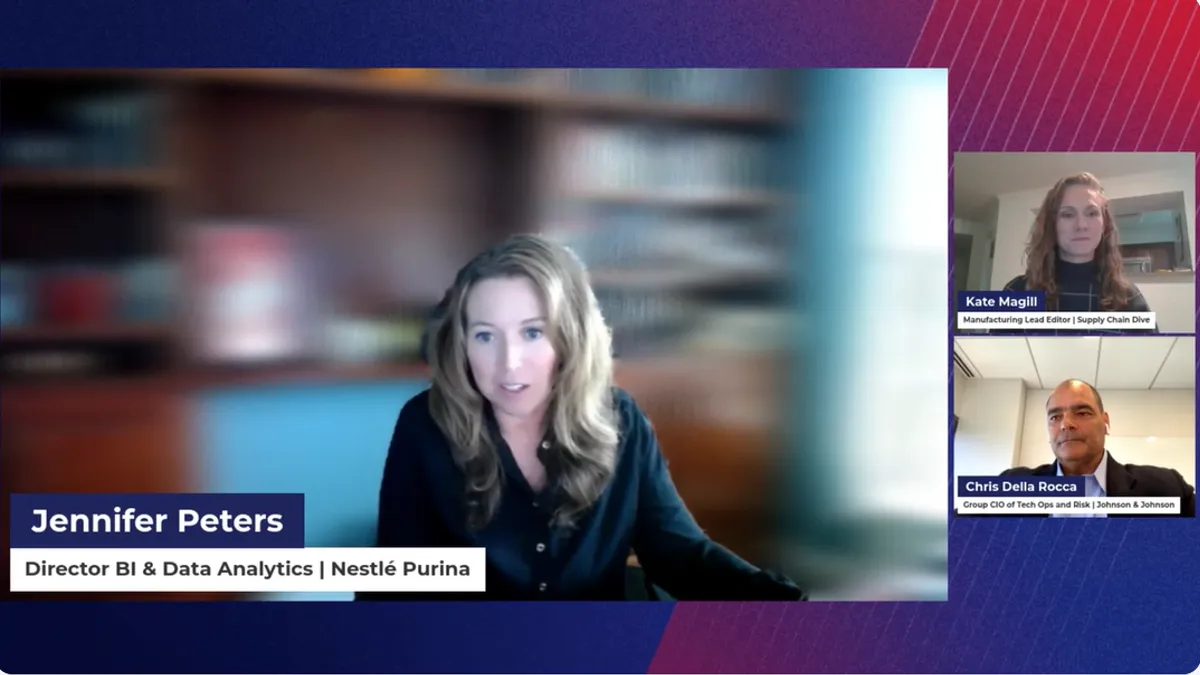Editor’s note: This story is part of a series highlighting takeaways from a July 24 event hosted by Supply Chain Dive, Trucking Dive and Manufacturing Dive. Register here to watch the replay on demand.
Creating artificial intelligence adoption plans needs to be an intentional process in order to sustain the corresponding benefits, Jennifer Peters, director of BI and data analytics at Nestlé Purina, said at Industry Dive’s live event on July 24, “Supply Chain Outlook: Trends and Risks To Watch in 2024.”
Although industry anxieties revolve around whether AI will reduce the need for manual labor in production, the technology is instead a tool to supplement the workforce to drive efficiency, the Nestlé Purina director said.
“I think today what I see as a top impact is that we can use artificial intelligence to supplement and really aid manufacturing workers and provide them with the right information at the right time so they can make strategic and critical decisions,” she said.
There are several ways to do this, Peters explained, noting that involving the user base early and often through projects to keep employees engaged throughout the entire process is a critical component.
“You can’t improve what you don’t measure,” she said. “So being intentional about creating, leading and lagging adoption metrics and success metrics for your projects is really critical as you move from deployment to hypercare into sustain to ensure that you don’t see a drop off in usage and then a slide in the results because ultimately that's going to harm your ROI.”
Peters said that Nestlé Purina also found a “solution champion” — or somebody with boots on the ground — to be extremely beneficial. The idea is that the champion can continue to have conversations with employees about using AI to boost excitement. Peters further noted that using communities of practice, or user groups, to meet and share or collaborate on ideas to help shape future roadmaps can foster engagement.
Although AI is optimizing and automating many traditional manufacturing roles, the technology is also changing the type of roles needed to keep production moving. For instance, Peters said Nestlé Purina created a robotics specialist role in the last five years to work alongside data scientists and engineers in its factories.
“We need to be intentional about both pulling from the outside as well as upskilling our current workforce to meet this moment, and be prepared for this integration of manufacturing technology and emerging technology,” Peters said.















